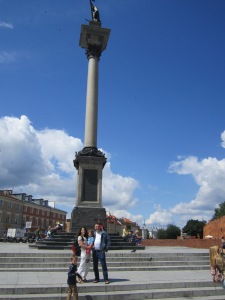Blessings everyone! I’ve been away for work over the last couple of weeks. Every time that I take such an extended leave from my writing, it brings home the fact that it has become such a life-giving part of my life and that the interactions I get with all of you are worth a million!
My Samhain was quite different from the past few years. For the first time in a long time, I went to a public ritual with the rest of the Wiccan community. Up to now, my contact with the Pagan community was limited to Crescent Moon and a few offshoots. My spiritual circle extended to a few spirit-minded healers, shamans and psychics. But this was the first time that I attended a public Wiccan ritual that was not organized or run by students of Crescent Moon or its affiliate teachers. I had other plans for that evening, but something within yearned to celebrate in a purely Wiccan way. I was curious of how it would feel.
There were over one hundred people at this ritual, most of whom I did not know. I had met some of the organizing members at Gaia gathering in May. I have to lift my witch hat to these people who pulled an amazing feat. It is difficult enough to lead an open ritual with people who are not familiar with one another. They lived up to the challenge of a huge crowd, with people of different backgrounds, different levels of knowledge of the Craft, from the seasoned practitioners to the merely curious. It flowed seamlessly, they took the time to explain the proceedings at the beginning so that everyone would be on the same page and the ceremony was simply poignant.
I had been removed from the organized Pagan community for more than 5 years, while I lived up north. All this time, I spent writing and forging my own identity and practice. Coming back to Montreal and reconnecting with the Pagan world brought home a few things. First and foremost, I realized how varied the community was and how established. And those who adhere to Wicca as a religion really live it. Some have lived this way for decades, so that they are no longer just dabbler and explorers. They are Wiccan in all its expressions. Their rituals are organized, their wording shared. They share common songs and expressions. As the organizers explained before the ritual, the ritual was conducted in a pure Wiccan style. Having studied in an eclectic setting with a little bit of this and little bit of that, this was not something that I was used to. But it made me understand a little more some of the backlash that I got when the book came out. There is a purely Wiccan tradition and I have a tendency of forgetting that.
This being said, the ritual was beautiful. The symbolism and the songs brought me back to what I had looked for from the beginning: the raw connection to the earth cycles and the Goddess. We chanted about death and passing, we called our ancestors and asked for guidance for the coming year. So, I found there what I came to find. But at the same time, I looked around at the people gathered there (OK it was Samhain and everyone looks a little odd dressed up…), but I did not feel like these were MY people. There were a number of the usual suspects: the dark, the eccentric, the dramatic, the seekers, the curious, and for sure the priests and priestesses of a Craft that needs to be preserved. There were also some of the people that I was also used to in my initial circles. In a crowd of over one hundred, it is obvious that I could not talk to everyone and learn their stories. But I would have liked to do that, just to know how all these people had gotten to be in the same place that night.
As I looked over the crowd, it struck me that I have a Tradition of my own that may differ quite a bit from a purely Wiccan practice. Part of that is the eclectic background that we may share as Christian Pagans or Witches. Another part is that we have a Christian tradition that inspires the kind of liturgy that we may include in our rituals. This includes a certain attitude and way of attending that may differ from Wiccan practice.
Maybe we are our own tribe…
On this Samhain, may the ones you loved be with you and may the new year bless you with the inner fire of Spirit!







